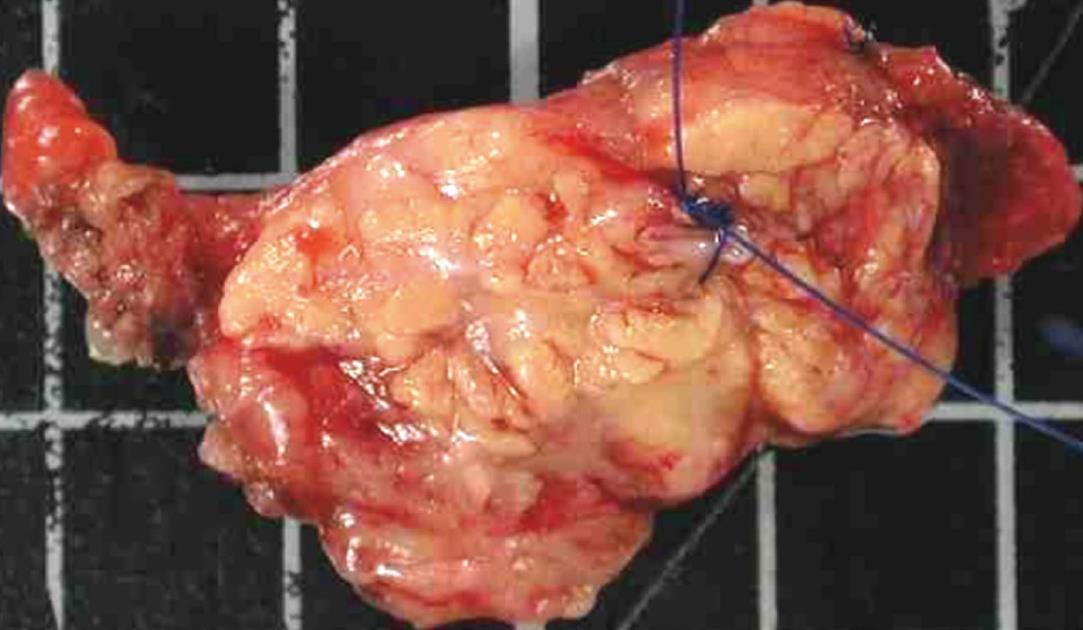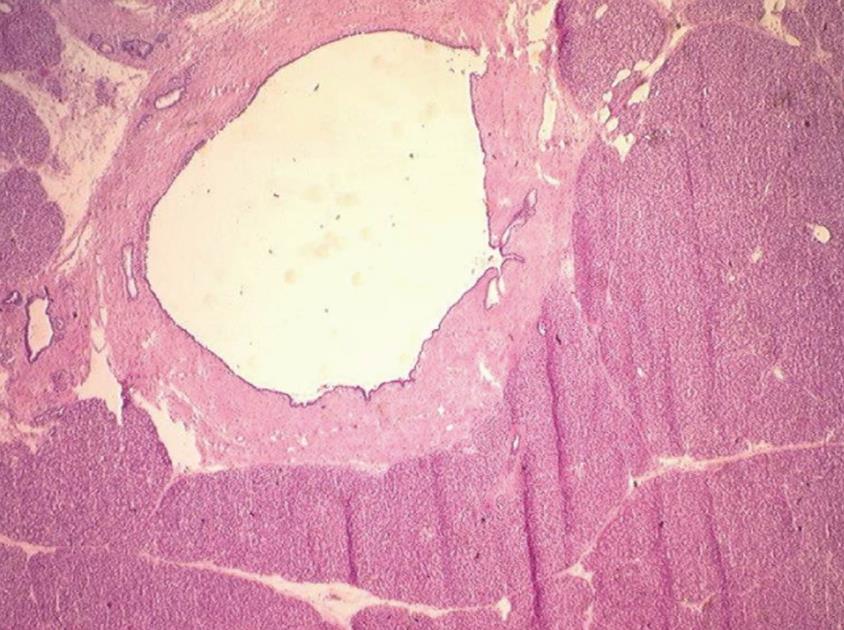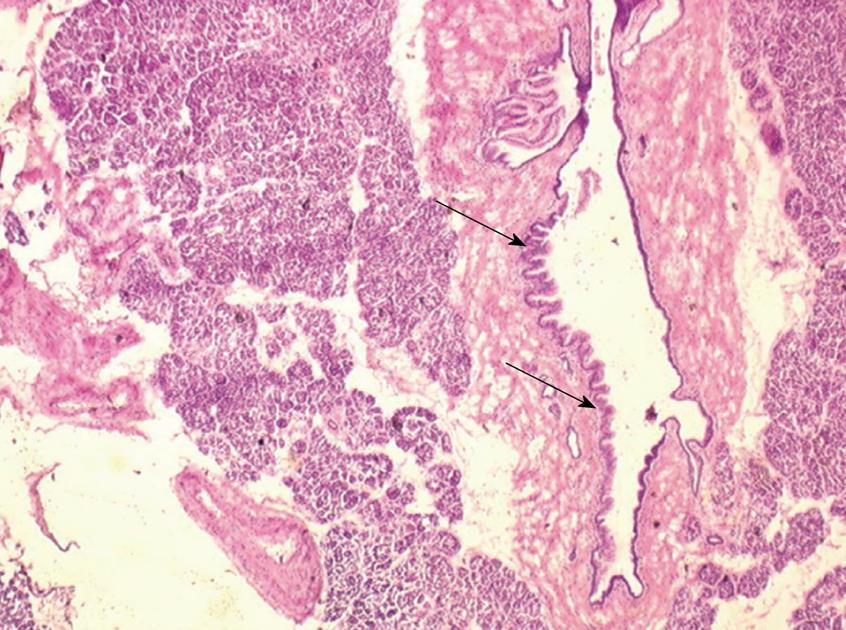Copyright
©2010 Baishideng Publishing Group Co.
World J Gastrointest Surg. Oct 27, 2010; 2(10): 352-358
Published online Oct 27, 2010. doi: 10.4240/wjgs.v2.i10.352
Published online Oct 27, 2010. doi: 10.4240/wjgs.v2.i10.352
Figure 1 A fresh cut section just before frozen sectioning.
The surgeon has orientated the margin by a guide mark stitch placed on the main duct.
Figure 2 On this frozen section, the main duct is dilated but its epithelium is normal without any intraductal papillary mucinous neoplasms lesion.
Figure 3 The main duct is focally involved by a low grade dysplastic intraductal papillary mucinous neoplasms (intraductal papillary mucinous neoplasms-adenoma) (arrows).
Figure 4 A borderline/moderate dysplasia intraductal papillary mucinous neoplasms involves a branch-duct (arrow).
The surrounding pancreatic parenchyma is normal
Figure 5 Standard options to determine extent of pancreatectomy according to results of frozen sectioning of the pancreatic margin after pancreaticoduodenectomy and distal pancreatectomy.
FS: Frozen sectioning; MD: Main duct; BD: Branch duct; CBD: Common bile duct).
- Citation: Sauvanet A, Couvelard A, Belghiti J. Role of frozen section assessment for intraductal papillary and mucinous tumor of the pancreas. World J Gastrointest Surg 2010; 2(10): 352-358
- URL: https://www.wjgnet.com/1948-9366/full/v2/i10/352.htm
- DOI: https://dx.doi.org/10.4240/wjgs.v2.i10.352

















